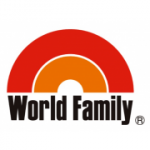
You might first envision its futuristic technology, from high-tech toilets to robotic servers delivering food and vending machines everywhere you go. Visitors often marvel at how advanced everything seems in Japan.
Alternatively, you might picture upscale districts offering themed cafes, meticulously tended gardens and shrines, high-end restaurants with delectable cuisine, and carefully curated atmospheres. You might also consider affordable yet advanced devices, well-tailored clothing, and numerous convenient gadgets you can buy.
From an outsider’s perspective, Japan appears alluring. It blends affordability with a distinct Japanese perfectionism. Public transportation networks are extensive bustling with all kinds of people.
You might even conjure images of salarymen in sharp suits commuting to work, bonding over drinks with colleagues, and returning to their families. High school students, in their uniforms, diligently move between school and cram school, all working hard toward their future.

At first glance, Japan seems like a true meritocracy. You can access high-quality, well-crafted goods and dine in beautifully designed establishments if you put in the hard work – first excelling in school and then dedicating yourself to the workplace.
However, this is just one facet of Japan. While it is indeed a hardworking society with numerous accomplishments, it faces a significant, growing problem. Many people work hard, yet their income doesn’t seem to match their effort.
Upon entering university, I encountered a prevailing sense of pessimism in my classmates’ discussions, which I initially didn’t fully pay mind to. Most came from affluent backgrounds, benefiting from numerous opportunities solely because of their university’s prestige.
As I ventured beyond the university, these concerns about Japan’s future economic standing and career prospects became more noticeable. While sitting in local bars, I heard stories of everyday salarymen who aspired to start families but were burdened by the anxiety of affording their children’s education, including cram schools, tutoring, and tuition at reputable schools.
On the flip side, women struggled with limited opportunities and a noticeable gender pay gap, revealing cracks in the image of meritocracy. They, too, desired families and romance, but they faced issues with the pressure not to work even when their families might face financial strain if they didn’t.
This perspective grew more prominent as I distanced myself from the university. The same anxieties were expressed when talking to company researchers, typical salarymen, hairdressers, or construction workers.
What is the general middle-class society model in Japan?
The history of Japan’s middle class starts in the era preceding the Meiji Restoration when Japan still operated under a feudal system with a rigid social hierarchy. Most of the population toiled as peasants and farmers, while the ruling elite comprised samurai and nobility. Although a modest merchant class existed, it still needed to be recognized as a significant middle class.
The late 19th century led to what is known as the Meiji Restoration, which bore sweeping reforms and modernization. The government dismantled the feudal structure, giving rise to a new group of bureaucrats and professionals. Thus, the budding Japanese middle class featured educators, civil servants, and professionals within burgeoning industries.
As Japan hurtled into the late 19th and early 20th centuries, the wheels of industrialization and urbanization turned at a breakneck pace. This era witnessed the flourishing of industrial and commercial sectors, leading to opportunities for individuals to ascend into the middle class through skilled labor, management roles, and entrepreneurial endeavors.
Following the ravages of World War II, Japan embarked on an ambitious reconstruction and economic expansion. The middle class experienced exponential growth during this period, underpinned by a thriving economy and a profound commitment to education. A surge of individuals pursued higher education degrees, funneling into white-collar professions.

The 1950s to 1970s, known as the High Economic Growth Era, showcased Japan’s dramatic economic ascent. The middle class consolidated and expanded as a growing number of people enjoyed elevated living standards, homeownership, and access to an array of consumer goods.
However, as the late 20th century dawned, Japan confronted economic stagnation, which, in turn, cast its shadow on the middle class. Wage stagnation, job insecurity, and a deceleration in economic growth began to unsettle segments of the middle class, sowing seeds of doubt about their economic stability.
What has changed between the 1960s and today?
Japan’s class society has undergone substantial changes from the 1960s to the present, with marked shifts within the lower, middle, and upper classes. These dynamics, influenced by a mix of economic, social, and demographic factors, have been further accentuated by the period of sluggish economic growth, deflation, and financial crises known as the “Lost Decades” since the early 1990s.
In the middle class, traditionally associated with stability, income stagnation has made it increasingly challenging for many to attain the same level of financial security and stability that previous generations enjoyed. The once-ubiquitous concept of lifetime employment has eroded, with heightened job insecurity, particularly among the younger workforces.
The lower class has witnessed a surge in precarious work, characterized by part-time and temporary employment, leading to job instability and reduced income. This has exacerbated income inequality, widening the gap between the lower and upper classes. In discussions about Japan, the lower classes are frequently overlooked despite being a significant backbone of society and everyday life, especially among individuals who didn’t attend university and lack the social prestige of salarymen.
When visiting Japan, tourists often explore well-maintained temples, dine at upscale restaurants serving delectable cuisine, and stroll past high-end stores in shopping districts. However, they seldom venture into rural countryside areas or spend time in residential neighborhoods where the disparities in the lives of Japanese people are more apparent.

These individuals struggle to earn enough to meet their needs, making marriage difficult and raising children an uphill battle. Women with partners, often in a part-time housewife role, can manage as non-regular employees thanks to their husbands’ income. Those who entered non-regular employment after the bubble years lack this financial cushion.
Japan now hosts a significant new underclass comprising non-regular employees beyond part-time housewives. While in many Western countries, the term “underclass” typically denotes marginalized minorities facing discrimination, in this case, it signifies a group dealing with economic hardship characterized by low wages and job insecurity.
But how many are really in this category? In 1992, there were 9.92 million non-regular employees, but this figure surged to 17.39 million by 2017. Moreover, in 1992, part-time housewives made up 60% of non-regular employees, but this share dropped below 50% in 2002, making the underclass the norm. In 2012, the underclass numbered 9.29 million, with a slight decline to 9.13 million in 2017, but this constitutes nearly a quarter of the entire workforce.
In addition, there are approximately three million jobless and unemployed individuals (excluding those over 60 and housewives), creating a broader underclass of around 12 million people.
Over the past three decades, Japan has grappled with mounting poverty-related issues, leaving its populace plagued by insecurity and depression. Escaping the underclass seems difficult without external intervention. Swift measures are imperative for the future. A substantial increase in the minimum wage is the first step needed to rectify the imbalance between full-time employees and non-regular workers.
However, the current administration is hesitant to implement such measures. Japan requires a government committed to reducing disparities and eradicating poverty, adopting effective strategies to prevent the country from sliding into impoverishment.
What major problems affect workers in Japan?
In contemporary Japan, the workforce grapples with a slew of pressing issues, each bearing significant implications for the nation’s economy and society. Among these concerns is the thorny problem of wage stagnation – a topic that often dominates conversations, especially when people gather for drinks. This issue has cast a particularly long shadow over younger workers, constraining their financial growth and purchasing power, and posing formidable challenges to their economic stability and family well-being.

Another prominent challenge is Japan’s rapidly aging population, which exerts substantial pressure on the nation’s social welfare system. This strain arises from the weakened number of young workers available to support the expanding ranks of retirees, contributing to a shortage of skilled labor.
Simultaneously, Japan grapples with a declining birth rate, leading to a shrinking working-age population. This demographic transformation exacerbates labor shortages and significantly challenges long-term economic growth. It’s a two-pronged dilemma: economic hardships reduce the desire to start families, which, in turn, contributes to the dwindling birth rate, further hampering the economy.
On top of that, Japan’s workplace culture clings to a tradition of age-based hierarchical structures marked by seniority-based promotions and decision-making processes. While there is a benefit in that young workers can learn from their older and more experienced peers, on the flip side, it also hinders opportunities for younger workers to advance in their careers based on merit and skills rather than age.
Further complicating the employment landscape is the issue of excessive working hours, colloquially referred to as “karoshi” or death from overwork. The prevalent culture of long work hours, while bearing a heavy toll on employees’ well-being, also compromises their work-life balance.
The convergence of wage stagnation and the relentless demands of the modern workforce, coupled with cultural pressures for perfectionism, fosters a pervasive sentiment among younger generations that they invest more into the system than they reap in return. This situation, in turn, serves as a disincentive for starting their own families, driven by concerns regarding the financial burden of raising children and the looming threat of burnout.
How does this affect incoming foreign workers in Japan?
The challenges within Japan’s modern workforce and the nation’s historical and cultural stance on immigration profoundly impact the experiences of foreign workers in the country.
Shortages across various sectors mark Japan’s labor landscape due to the country’s aging population and declining birthrate. Industries like healthcare, agriculture, construction, and hospitality face a growing deficit of workers, presenting an appealing prospect for foreign workers to step in and contribute significantly to Japan’s economy.

Throughout history, Japan has leaned toward cultural and ethnic homogeneity in its immigration policies. Recognizing the urgent demand for foreign labor, the government has initiated various programs, including the Technical Intern Training Program, the Specified Skilled Worker Program, and efforts to attract highly skilled professionals.
However, there is still a long road ahead, as many foreign workers encounter significant challenges securing job opportunities. Many foreigners lament that, even with highly developed skills, it can sometimes feel like their only options are low-paying service jobs, such as hotel cleaning, convenience store clerking, or English teaching.
Foreign workers in Japan often grapple with challenges related to working conditions, discrimination, and exploitation. Unfair wages and suboptimal work environments have also been a concern. Language and cultural differences can pose significant challenges for foreign workers in Japan—most job opportunities mandate proficiency in the Japanese language, which may present a barrier to entry. Cultural disparities in the workplace can also complicate the process of assimilation.
The degree of social acceptance and integration for foreign workers within Japanese society can vary. While many Japanese individuals are welcoming and supportive, instances of discrimination and prejudice still persist.
However, due to mounting labor shortages and persistent economic stagnation, Japan is increasingly compelled to reconsider its approach to immigration. As a result, opportunities for foreign workers have begun to evolve and expand.
If you’re considering working in Japan, one key factor that can aid in your adaptation is mastering the Japanese language. While navigating life with only English is feasible, it will significantly restrict your choices and create a divide between you and your Japanese neighbors. This is where exploring options such as language schools and community center classes can be highly advantageous, even after you’ve secured a stable job.
Links:
Crisis Narratives, Institutional Change, and the Transformation of the Japanese State by Sebastian Maslow and Christian Wirth
https://amazon.co.jp/Crisis-Narratives-Institutional-Transformation-Japanese/dp/143848609X
“Gap society as a new narrative of social division in Japan” by Professor David Chiavacci https://fpc.org.uk/gap-society-as-a-new-narrative-of-social-division-in-japan/
The Challenges Facing Japan’s Underclass by Hashimoto Kenji
https://www.nippon.com/en/in-depth/d00691/
トップページSDGsを知る経済格差の日本と世界の現状は?原因や問題、解決に向けた取組も紹介経済格差の日本と世界の現状は?原因や問題、解決に向けた取組も紹介
馬場正裕
https://spaceshipearth.jp/economic-disparity/
















